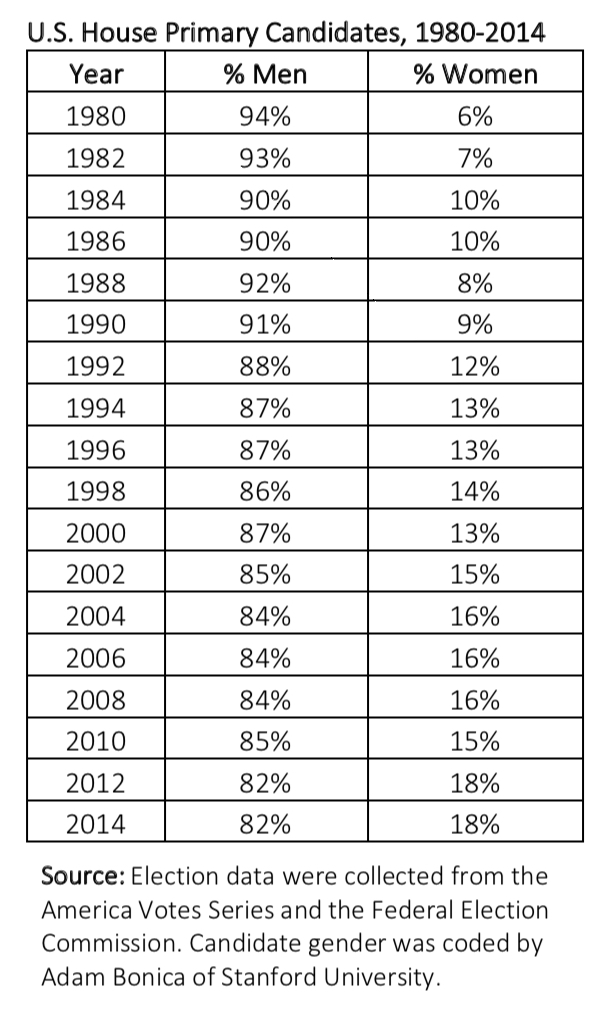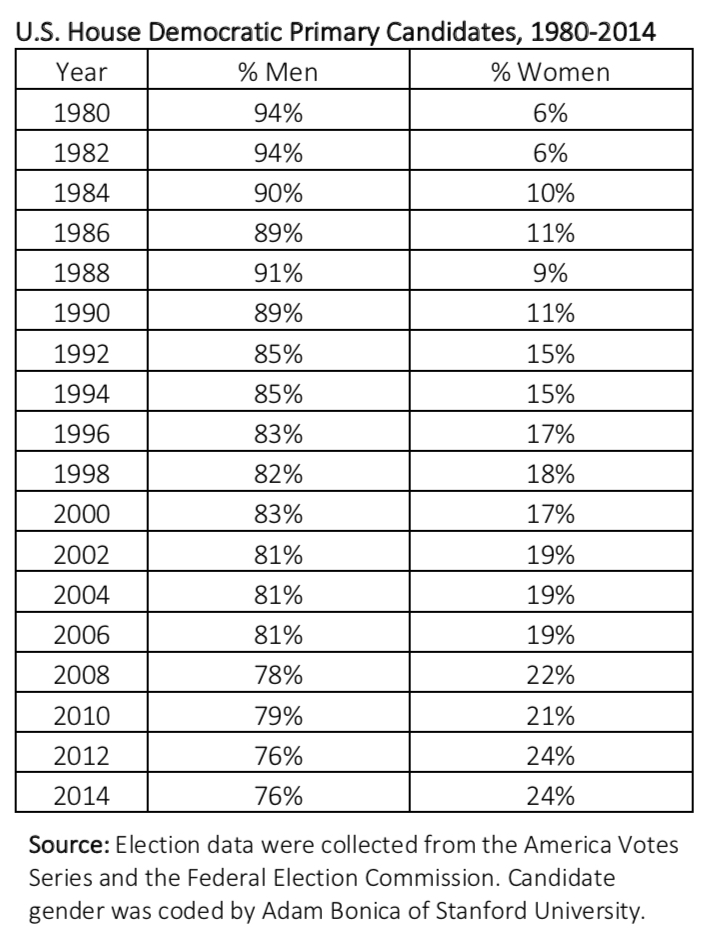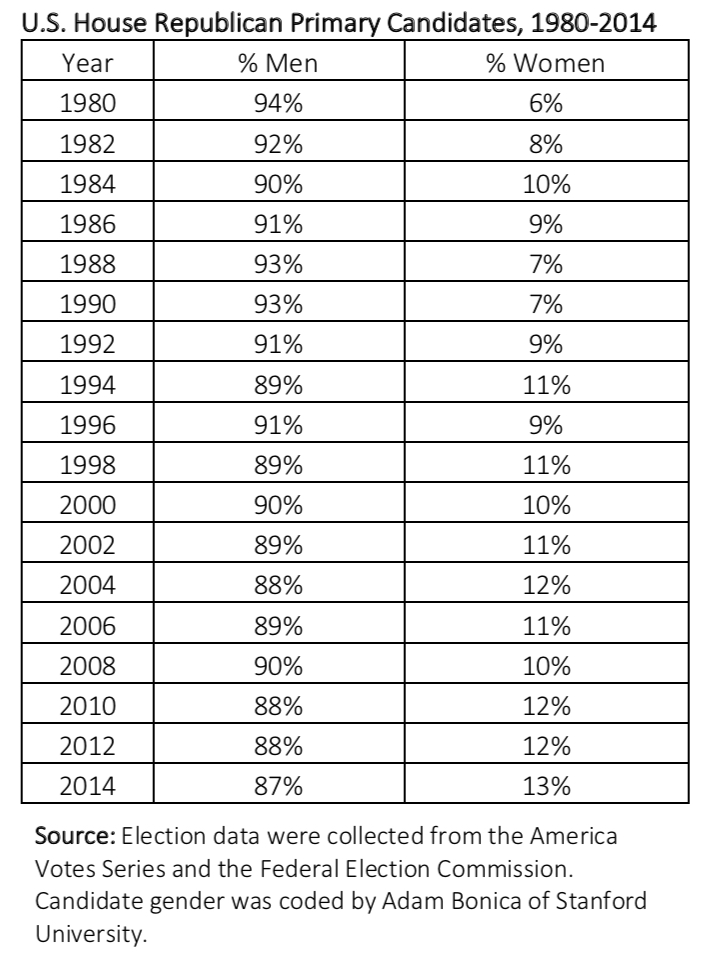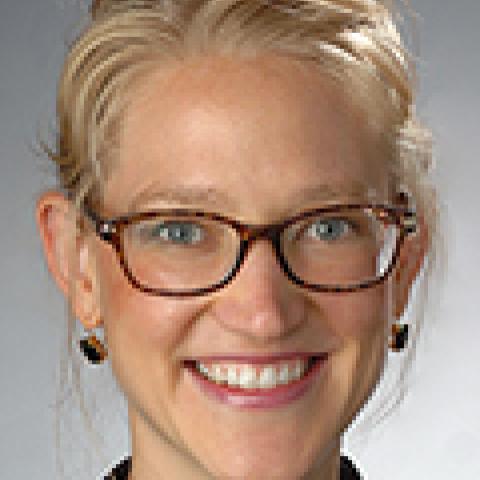Women are less than a quarter of all U.S. House candidates this year, but that's still record-breaking.
The 2018 election has been widely touted as the next “Year of the Woman.” The number of women seeking congressional office is indeed at an all-time high, with 468 women running for the U.S. House and 51 running for the U.S. Senate. According to the Center for American Women and Politics, these figures well surpass the previous records of 40 female Senate candidates who ran in 2016 and 298 female House candidates who ran in 2012.
Yet as Kelly Dittmar wrote last week, women are still less than one quarter—24%—of all major party House candidates running in 2018, up from 18% in 2016. And Democratic women are the real drivers of the surge in female candidates in 2018: women are 33% of all Democratic candidates but only 14% of all Republican candidates. Many parallels have been drawn to previous election cycles, but how does the number of women candidates in 2018 look over a longer time horizon?
I collected data on U.S. House candidates from 1980 to 2014 to examine historical and partisan changes in the number of female candidates on the ballot over the last three decades. The tables below include all major party primary candidates from 1980 to 2014, with breakouts for Democrats and Republicans.
It is clear that the number of women candidates has increased steadily over time. The percentage of female primary candidates is four times higher in 2018 than it was in 1980. What is more, the six point increase in the percentage of women candidates compared to the previous year—18% in 2016 to 24% in 2018—is larger than that in any other year during this period. The second largest increases in the percentage of female candidates were 3 points in 1992 and 2012.

As Dittmar noted, much of the current surge in women candidates has been fueled by Democratic women. But it hasn’t always been this way. Throughout the 1980s, women made up relatively equal proportions of Democratic and Republican primary candidates, hovering around 10% in both parties.
The first significant change was in 1992, popularly dubbed the “Year of the Woman,” when the number of Democratic women primary candidates doubled from the previous election and the percentage of women candidates increased by four points. Yet Democratic gains did not end there. The proportion of female Democratic candidates has increased slowly but steadily since then. These small, incremental gains are what differentiate women in the Democratic Party from women in the Republican Party.

To be sure, the proportion of women in Republican primaries has increased—in fact, more than doubled—during this period, from 6% in 1980 to 14% in 2018. However, the trend has mostly been one of stagnation. In my research, I have shown how the Republican women in Congress in the 1980s and 1990s were virtually all ideological moderates who are no longer in office today. The complete replacement of moderates had important implications for the representation of Republican women in particular.
Unlike the Democratic Party, which both retained and added new women to their caucus, the Republican women in Congress today are almost an entirely new crop of members. Of the 23 Republican women in the U.S. House, only 2 were elected before 2000, and one of them—Ileana Ros-Lehtinen (FL)—is retiring this year.

A longer time horizon helps us to put the 2018 figures in perspective and consider the effects for women’s representation and female political engagement more generally. Scholars have been cautious about whether this surge in female candidates will result in the election of more women to office, primarily because many of them are running against incumbents or in districts that favor the other party. Yet all agree that this year is a historic one for women candidates, and the data shown here provide a new window into how the changes we are seeing this year are indeed different from those in previous election cycles.
Danielle Thomsen is an Assistant Professor in the Maxwell School of Citizenship and Public Affairs at Syracuse University. She is the author of Opting Out of Congress: Partisan Polarization and the Decline of Moderate Candidates.


